William Bayer, author of  The Dream of the Broken Horses,
The Dream of the Broken Horses,  Switch,
Switch,  Peregrine and Punish Me With Kisses, among other titles, has woven Naomi Kobayashi’s art into his upcoming novel – working title, In the Weave. Bayer is a collector of Kobayashi’s art work — weavings of thread and strips of washi paper on which she has written calligraphy. For his new book, Bayer envisioned a character with a secret recorded on paper that she protects by cutting the pages into strips and incorporating it into a weaving, which is then unraveled so the paper strips can be steamed and pieced back together to reveal the secret. When contacted for her advice, Kobayashi agreed that a weaving of paper strips and thread could be de-constructed and de-coded as Bayer planned; the paper strips would survive steaming and unraveling, she wrote, because handmade washi paper is strong. She worried, however, that the ink might blur during steaming and suggested that Bayer’s character use oil-based ink.
Peregrine and Punish Me With Kisses, among other titles, has woven Naomi Kobayashi’s art into his upcoming novel – working title, In the Weave. Bayer is a collector of Kobayashi’s art work — weavings of thread and strips of washi paper on which she has written calligraphy. For his new book, Bayer envisioned a character with a secret recorded on paper that she protects by cutting the pages into strips and incorporating it into a weaving, which is then unraveled so the paper strips can be steamed and pieced back together to reveal the secret. When contacted for her advice, Kobayashi agreed that a weaving of paper strips and thread could be de-constructed and de-coded as Bayer planned; the paper strips would survive steaming and unraveling, she wrote, because handmade washi paper is strong. She worried, however, that the ink might blur during steaming and suggested that Bayer’s character use oil-based ink. 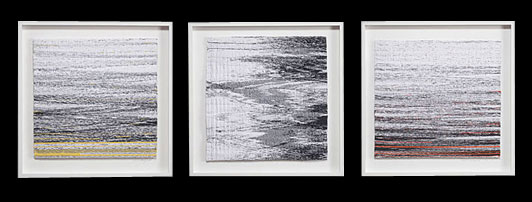 We’ll let you know when the book is ready to hit bookstore shelves. In the meantime. We’ve gotten Bayer’s permission to share a snippet of what’s to come:
We’ll let you know when the book is ready to hit bookstore shelves. In the meantime. We’ve gotten Bayer’s permission to share a snippet of what’s to come:
From In the Weave, by William Bayer:
Kate and I are up in the A.I.R. loft. Liv’s weaving is spread out before us, reminding me of that T. S. Eliot line “like a patient etherised upon a table.” In fact, we have set TPR on the apartment dining table, and beside it have set out our instruments: scissors, needles, tweezers. Surgery is about to commence.
Kate smiles. “Nervous?”
“How can I not be?”
“I think you should make the first cut,” she says.
I nod, gaze down at the weaving, so beautifully finely made. And then I take the scissors in hand, and begin.
We’ve discussed this deconstruction process at great length, and though we’re not certain if we’re right, we’ve decided to start by scissoring off the top selvage, snip the cotton warp in numerous places to try and loosen the weave, then pluck out the first several washi paper wefts. It’s our hope that if we steam these wefts, they’ll open up and flatten out. Then and only then will we be able to determine if there’s writing on them. If there is, we’ll repeat the process hundreds of times until we’ve removed and steamed open all the strips, and then try, as puzzle solvers, to reassemble these strips until we’ve reconstructed the original sheet of paper. Only then will we be able to read whatever Liv may have written on it. We know this process will be laborious, will take us many hours, and may, in the end, come to nothing. In which case we will have destroyed her amazing work of art. But what choice do we have? If Liv did in fact “conceal my pain in the weave,” we must uncover it. And if she didn’t, we’ll be left with nothing but a heap of cotton thread and marked up paper strips, and a tremendous amount of remorse.

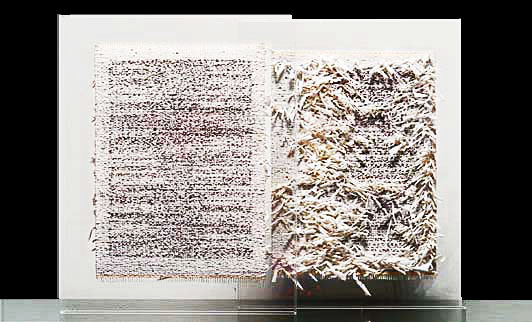
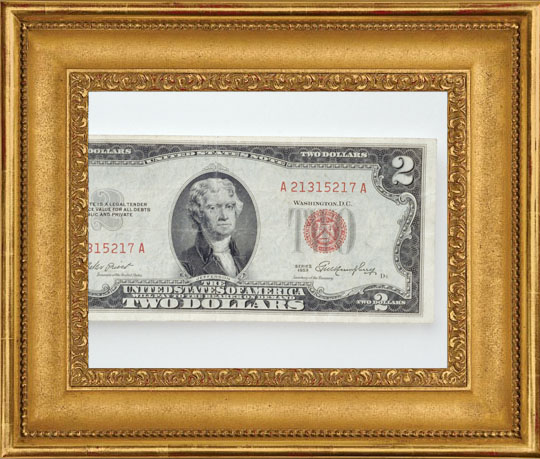
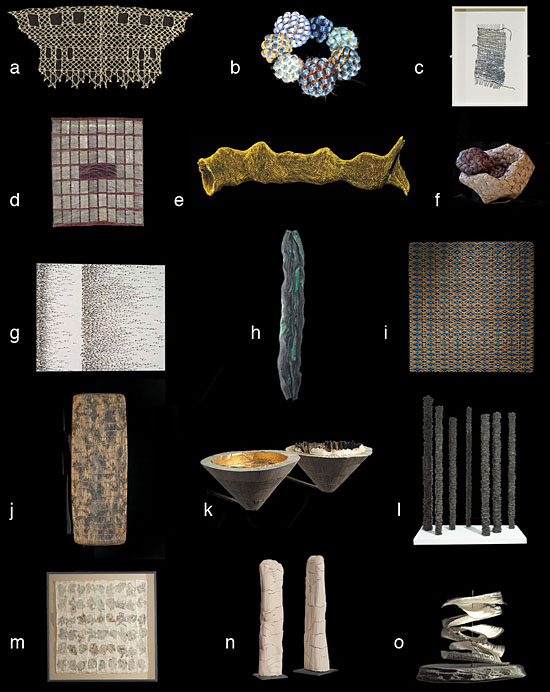

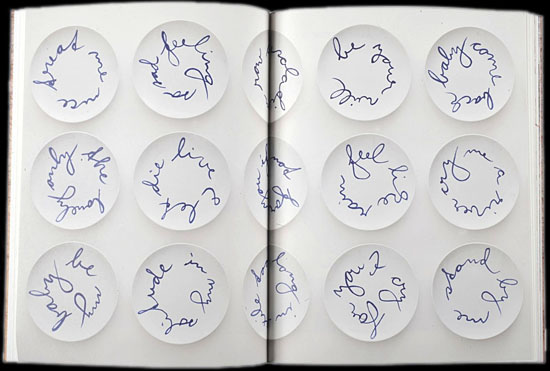
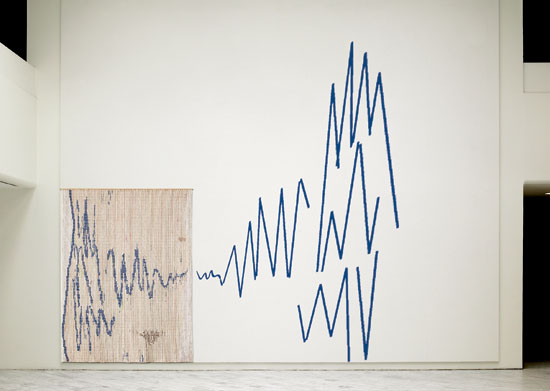

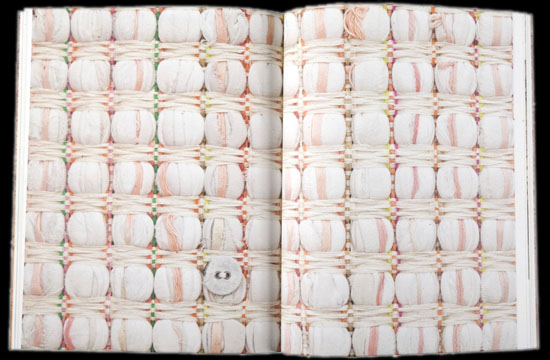
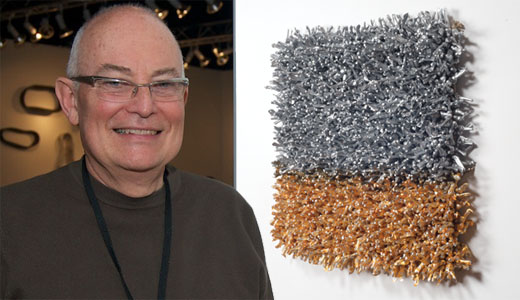
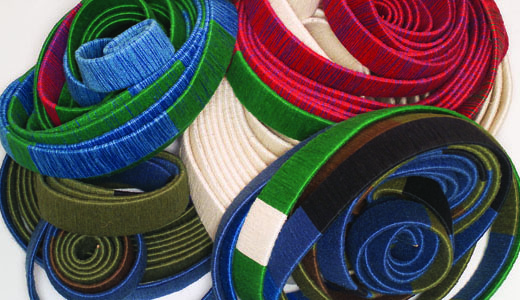
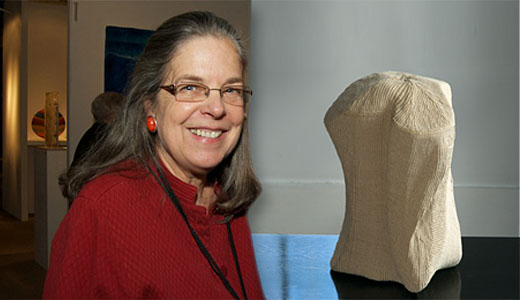
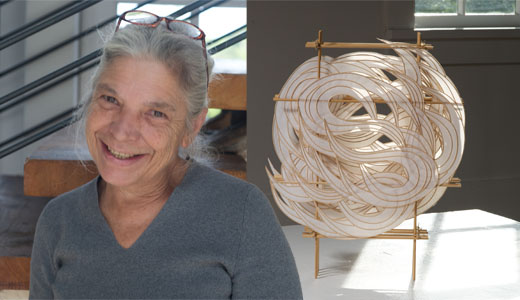
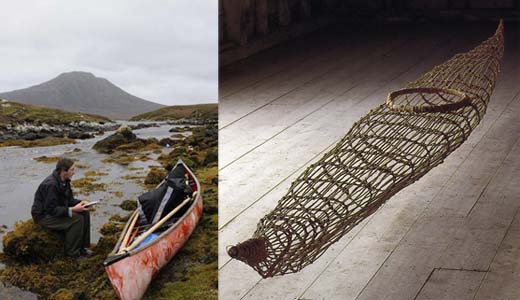
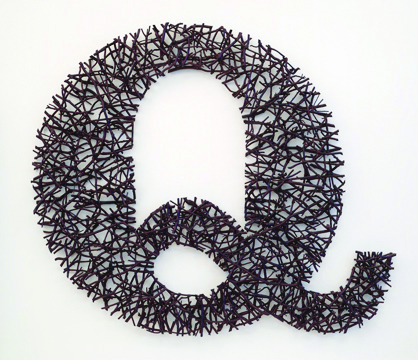
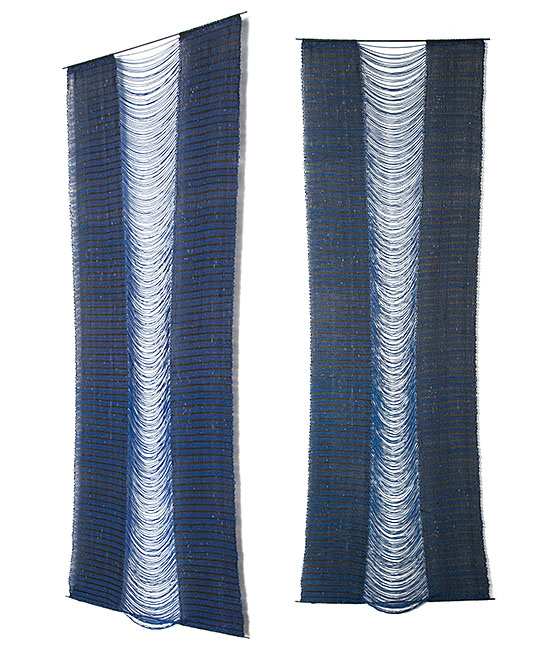




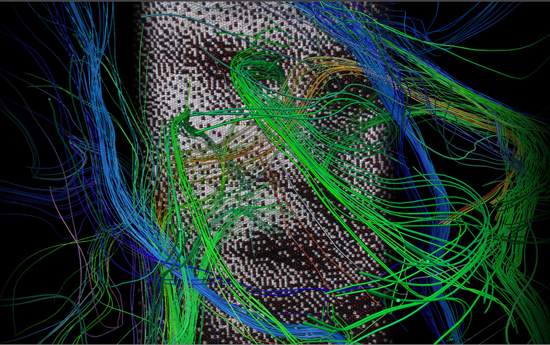


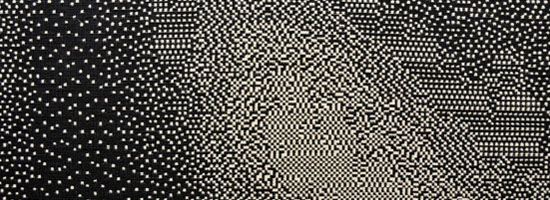

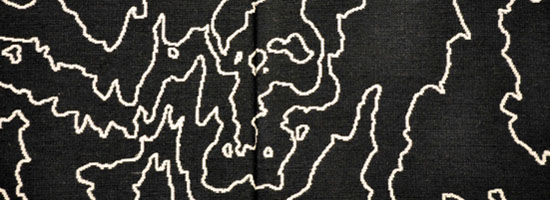
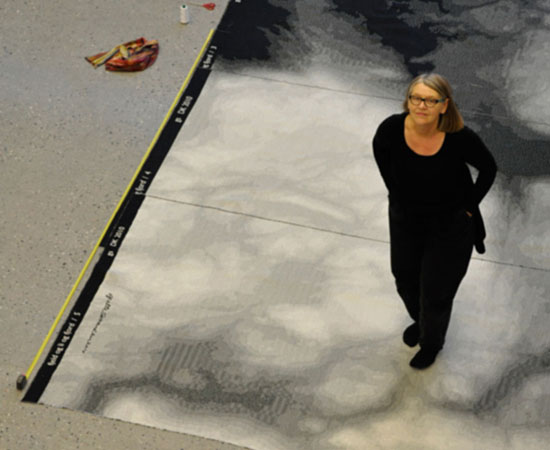
Dispatches: See the World’s Largest — or Nearly Largest — Ball of Twine
Who says you can’t learn things from watching television? in In a recent episode of Covert Affairs on USA, CIA operative Annie Walker and her sister discuss the world’s largest ball of yarn located in Lamar, Missouri. Got me wanting more information. Turns out that the competition for largest twine ball (some call them yarn balls, but apparently, they are mostly really twine balls) is pretty fierce and Missouri has only two of several contenders.
Darwin World Largest Ball of Twine created by 1 man photo by Mykl Roventine
Darwin, Minnesota boasts a ball that weighs 9 tons and is 12-feet wide and was mentioned in Crazy Al Yankovic’s video for the song, White and Nerdy. It was rolled by one man, Francis A. Johnson, between 1950 and 1979 http://www.darwintwineball.com. Darwin residents look down on a rival twine ball in Cawker City, Kansas.
Cawker City World Largest Twine Ball http://www.worldslargestthings.com/wllist.htm
World’s Largest Ball of Twine Cawker City, Kansas By jimmywayne http://www.flickr.com/photos/auvet/860982521/
While it was begun by one man in 1953, it was completed by townspeople in a Twine-a-Thon in 2003 http://skyways.lib.ks.us/towns/Cawker/twine.html. A local artist, Cher Olsen, has integrated the twine ball into her paintings, reworking American Gothic and Mona Lisa and the like and these are on display at the Masterpiece Twine Walk http://www.getruralkansas.org/Cawker-City/61Explore/258.shtml. Lake Nebagamon, Wisconsin has it’s own contender.
Created by James Frank Kotera who started in 1979, JFK estimates that it weighs 19,336 pounds, which may make it the heaviest twine ball. Only one entry has been certified by the Guinness Book of World Records. That’s the one at Ripley’s Believe it or Not in Branson, Missouri that’s 41.5 feet in circumference http://www.ripleys.com/branson. (Though some say it shouldn’t qualify as it’s made of nylon twine.) As for the one in Lamar, Missouri –I couldn’t find it but there is an attractive multi-colored ball at the Pattee House Museum in St. Joseph, Missouri http://www.washburn.edu/cas/art/cyoho/archive/MidwestTravel/Patee and reportedly one made of postal string at the American Bowman Restaurant and O’Malley’s Pub in Weston, Missouri. If you’re vacationing in the Midwest this summer — check ’em out. You can get hats, start-your-own-twine-ball kits and great We-Were-There photos.